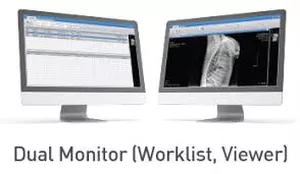DICOM (Digital Imaging and Communications in Medicine) was developed to serve as an international standard of communications to transmit, retrieve, print, process, and display medical imaging information such as digital x-rays. This system is widely used in the storage and transfer of medical imaging, enabling the integration of devices such as scanners, workstations, printers, network hardware, and PACS (Picture Archiving and Communication Systems), which is significant.
DICOM data consists of name and identifying information along with image pixel data, which can be compressed using a variety of formats, including JPEG, lossless JPEG, JPEG 2000, and RLE (run-length encoding). In an effort to display identical grayscale image display, the DICOM committee developed DICOM grayscale standard display function (GSDF) for digitally assigned pixel values. Such images must be printed or viewed on devices that have been calibrated to GSDF.
The DICOM standard is managed by National Electrical Manufacturers Association (NEMA). DICOM is present in nearly every type of radiology, cardiology imaging, and radiotherapy devices, such as x-ray, CT, MRI, ultrasound and others. With billions of DICOM images currently in use in clinical care, DICOM is one of the most widely deployed healthcare messaging standards in the world. The first publication for DICOM was in 1993. Since then, the standard has allowed replacement of x-ray film with a fully digital workflow. It’s a widely accepted notion that DICOM has in fact “changed the face of clinical medicine.”
DICOM functions include send, receive, store, query, retrieve, modality worklist, and print. ExamVue products are bundled with software that unlocks all of the provided DICOM capability, giving you the ability to communicate with other DICOM enabled software.


